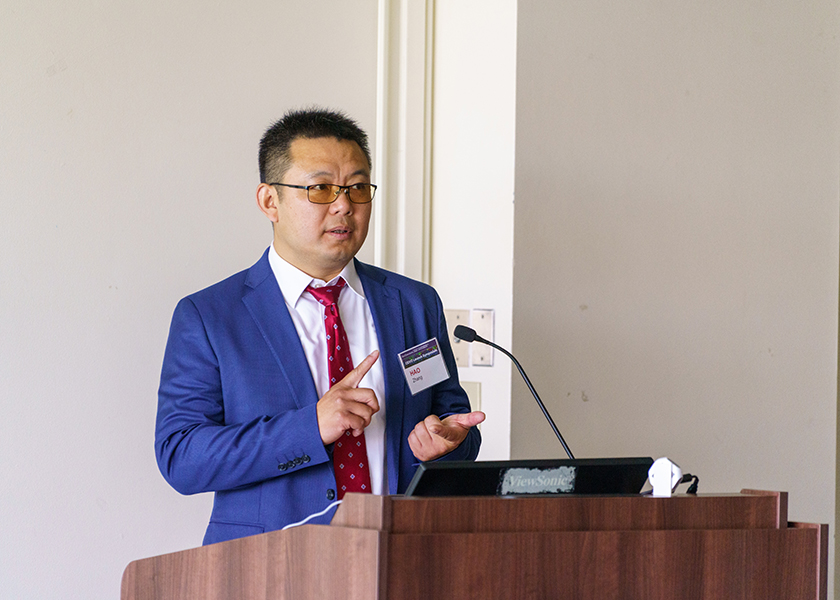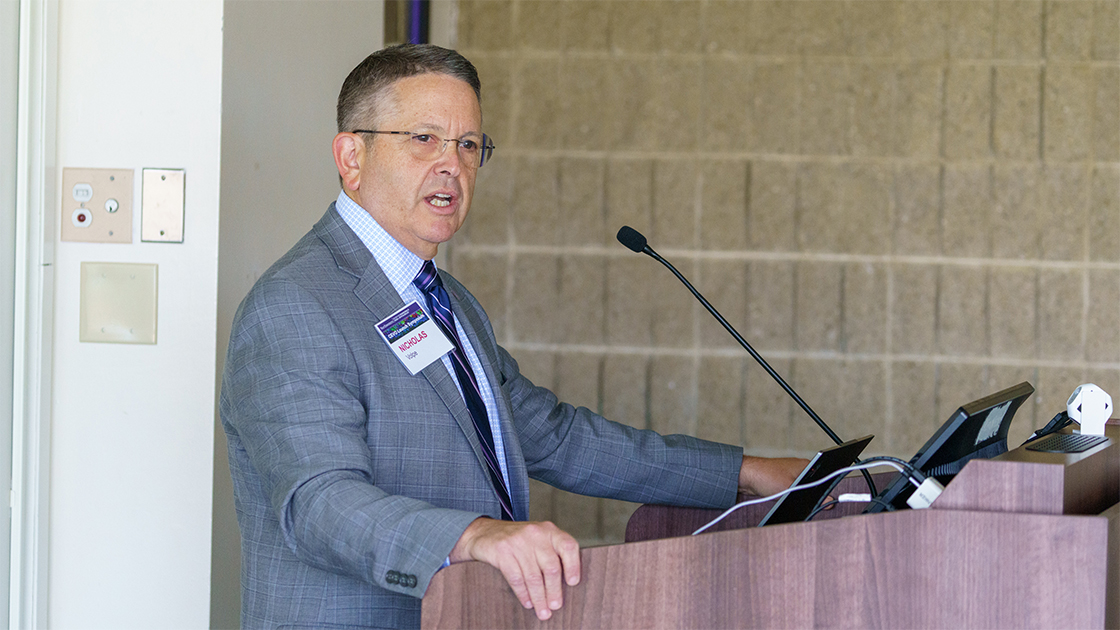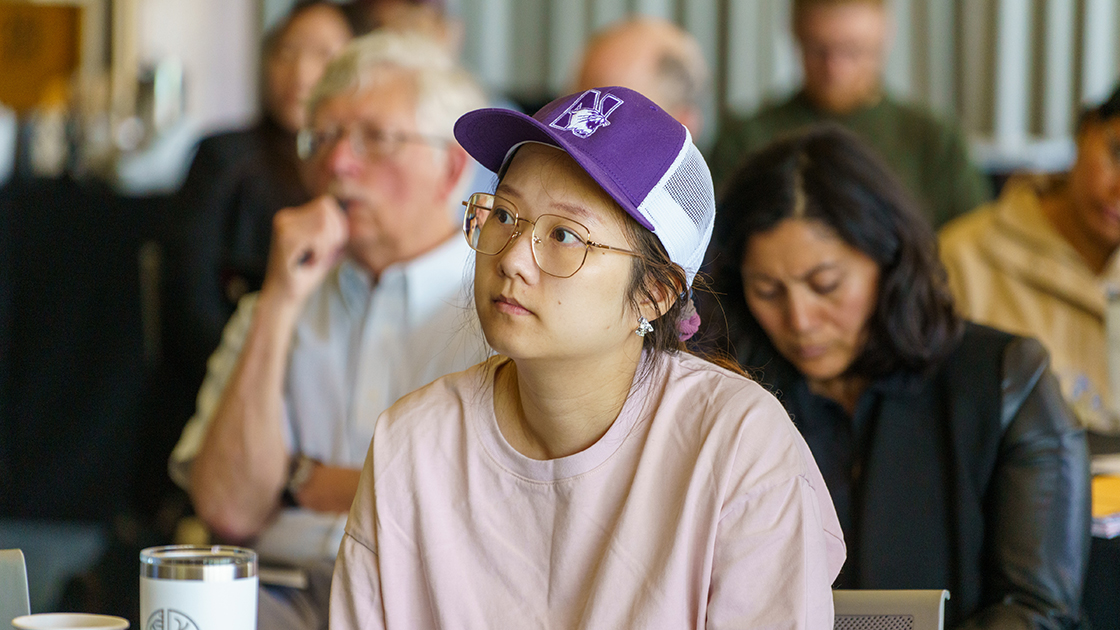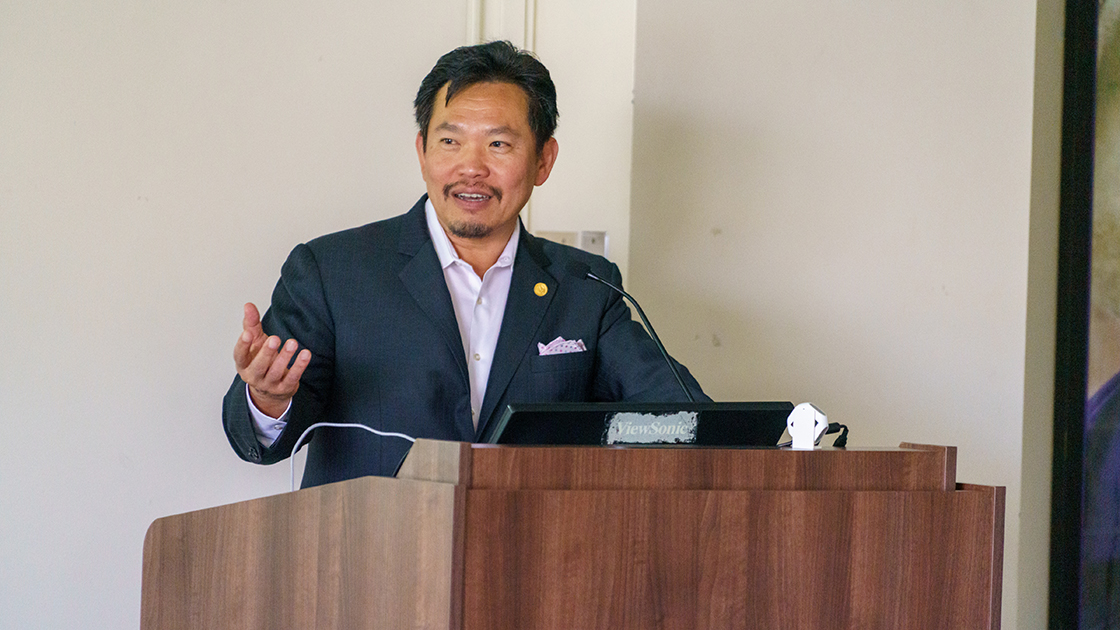Center for Engineering in Vision and Ophthalmology Marks Launch with Symposium
The center is directed by Northwestern Engineering’s Hao Zhang
At the Center for Engineering in Vision and Ophthalmology (CEVO) launch symposium, Northwestern Engineering’s Hao Zhang made it clear why the center’s work is important.
“Vision loss is actually the second-most feared condition. That’s why anything improving vision greatly improves the quality of life,” said Zhang, professor of biomedical engineering at the McCormick School of Engineering. “This center is focused on translating engineering research and interdisciplinary education. We want to train more MSTP (medical scientist training program) students to understand the injury aspect.”
Zhang spoke at the June 14 event held at the Norris University Center. CEVO will work to develop new engineering tools to improve vision loss diagnosis and management, and restore sight. Directed by Zhang, the center is committed to translating engineering discoveries into ophthalmology practice with a focus on the interdisciplinary training of next-generation engineers and physicians.

“As a school, Northwestern Engineering has a strong and rapidly growing effort at the intersection of engineering and the biosciences. We’re also deeply committed to moving our innovations out of the lab and into the market where they can improve lives,” McCormick School of Engineering Dean Christopher Schuh said in recorded remarks. “I’m absolutely delighted by the launch of CEVO, as it perfectly reflects both of these priorities.”
Along with Zhang, the event was emceed by Nicholas Volpe. Volpe, the George W. and Edwina S. Tarry Professor of Ophthalmology and chair of the Department of Ophthalmology at the Northwestern University Feinberg School of Medicine, codirects the center with Zhang.
Volpe also stressed CEVO’s interdisciplinary work.
“We’ve set off on that journey (of both campuses working together), and I hope CEVO is a quintessential example of that direction we hope to go in as a university,” Volpe said, “taking all the collaborative effort of our brilliant engineers and our great ophthalmologists and putting it together to deliver better inventions, better care, and a better future for our patients.”
One person who’s done that in the field is David Huang, professor of ophthalmology and World Family Chair in Ophthalmic Imaging at Oregon Health and Science University. The keynote speaker of the event, Huang delivered the address “Seeing Small and Aiming Big: the Development and Clinical Impact of Optical Coherence Tomography (OCT),” telling the story of how the imaging technology he helped create in 1991 has become the standard for diagnosing and monitoring retinal diseases, optic nerve diseases, and corneal diseases.
Besides developing the machinery, OCT needed to be commercialized to have a true widespread impact, Huang said.
“We’re not motivated by greed. We’re motivated by a desire to help our patients,” Huang said. “That requires commercialization.”
When OCT was first pioneered, Huang was a student at MIT in the lab of Professor James Fujimoto. The importance of students and their contributions in research was emphasized by Steven Feldon, the chair of ophthalmology at the University of Rochester School of Medicine and Dentistry.
“I really encourage part of what you’re doing here today to be stimulating your young, brilliant people not just to pursue pure science but to really go out and to make them open to the broader opportunities of leveraging an idea into something that changes the world,” Feldon said during his speech “From ‘Eyedeas’ to Invention.”
Northwestern University president Michael Schill spoke to kick off the day. Introduced by Volpe, Schill explained how CEVO fits into the University’s priorities, including advancing in biosciences and strengthening the academic community between Northwestern’s campuses.
“Many of the greatest advances in research and innovation and discovery are going to be at the intersection of medicine and engineering,” Schill said.
Other speakers included:
- SriniVas Sadda, president and chief scientific officer, Stephen J. Ryan-Arnold and Mabel Beckman Foundation Endowed Presidential Chair, Doheny Eye Institute
- Yali Jia, Jennie P. Weeks Professor of Ophthalmology, associate director of the Center for Ophthalmic Optics and Lasers, Oregon Health and Science University
- Joel Schuman, vice chair for research innovation, Wills Eye Hospital
- Diane Bovenkamp, vice president of scientific affairs, BrightFocus Foundation
- Randy Christopher Bowen, assistant professor of ophthalmology, Feinberg School of Medicine




